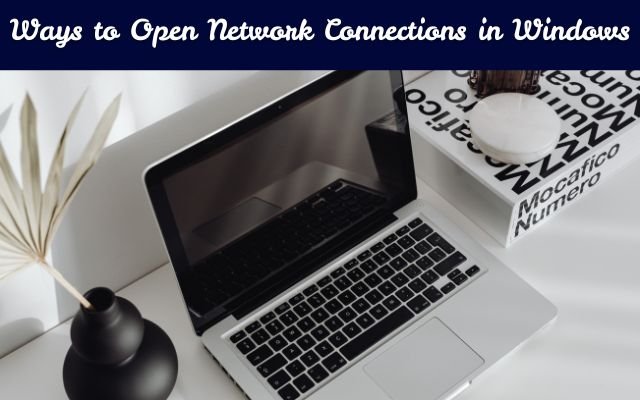4 Ways to Open Network Connections in Windows
Learn 4 easy ways to open Network Connections in Windows to manage adapters, fix issues, and set up networks quickly.

The Windows Network Connections tool helps you manage network adapters, fix connection issues, and set up new networks. Whether you’re troubleshooting a slow connection or setting up Wi-Fi, this tool makes it simple to adjust your network settings.
If you need to access it, here are four easy ways to open Network Connections in Windows and take control of your network.
This tool lets you view active network adapters, change settings and fix network problems. Knowing how to open Network Connections in Windows makes it easier to manage and improve your internet connection.
Table of Contents
Use the Start Menu to Open Network Connections in Windows
The quickest way to open the Network Connections tool is through the Start menu. First click on the Start button or press Win + S to bring up the search bar. Then type in “network connections”.
When you type “View network connections” shows at top of the search results. Simply click it to open the Network Connections pane. It is a simple and efficient way to view and manage your network configurations.
Use Run Command to Open Network Connections in Windows
Another quick way to open the Network Connections tool is by using the Run command. Just press Win + R on your keyboard to open the Run dialog box, type “ncpa.cpl”, and hit Enter.
This will open the Network Connections window directly, where you can manage your network adapters and settings.
Use Quick Access Menu to Open Network Connections in Windows
If you enjoy utilizing keyboard shortcuts, try this method. To reach Network Connections window, simply press Win + X followed by N on your keyboard.
This shortcut is part of the Quick Access Menu, which has been available since Windows 8 and continues in newer versions. The menu provides easy access to frequently used system tools, and pressing N takes you directly to the Network Connections tool.
Use Control Panel to Open Network Connections in Windows
If you prefer a more traditional method, launch the Network Connections tool from the Control Panel. Begin by opening the Start menu, type “control panel” into the search field, and picking the first result.
Once in the Control Panel, go to Network and Internet > Network and Sharing Center. On the left side, click “Change adapter settings,” and you’ll be taken to the Network Connections window. While it involves a few extra steps, it’s simple if you’re used to navigating the Control Panel.
Opening the Network Connections tool does not have to be difficult. Instead of building shortcuts you can just utilize one of the four ways described above.
- Why Super Duolingo is a Must-Have for Language Learners
- 7 Top Free Websites for DIY Arts and Crafts Projects
- 5 Simple Ways to Fade Audio on Your Smartphone
FAQ
What is the Network Connections tool in Windows?
The Network Connections tool is a built-in Windows feature that allows users to manage network adapters, troubleshoot connection issues and configure new network connections.
Why can’t I find the Network Connections tool on my computer?
If you can’t find the Network Connections tool, ensure you are using the correct search term or method. You can access it through the Start menu, Run command, Quick Access Menu or Control Panel.
How do I troubleshoot network issues using Network Connections?
To fix common network issues- right-click your active network adapter in the Network Connections box and choose “Diagnose”.
Can I disable or enable network adapters from Network Connections?
Yes, you can right-click any network adapter in the Network Connections window and choose “Disable” or “Enable” to manage your network connections.
Is there a shortcut to open Network Connections quickly?
Yes, the fastest way is to press Win + R and then type ncpa.cpl and hit Enter. This instantly opens the Network Connections window.



